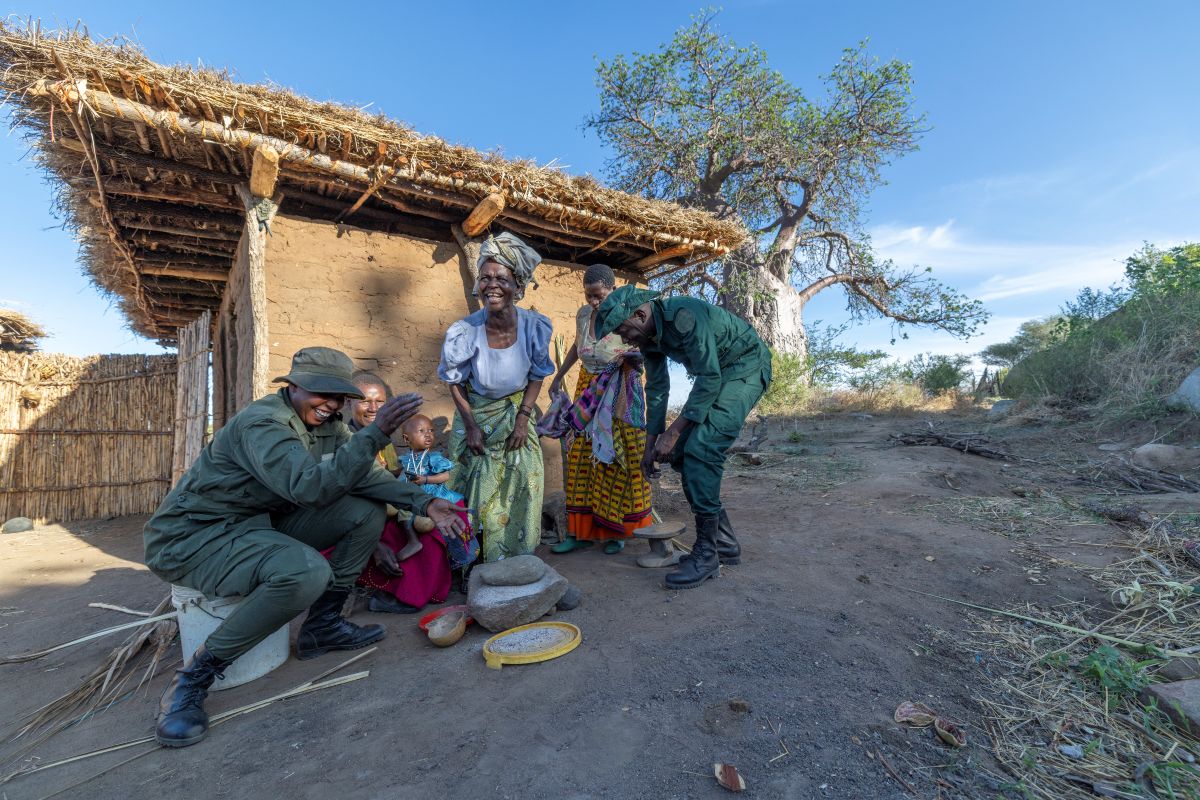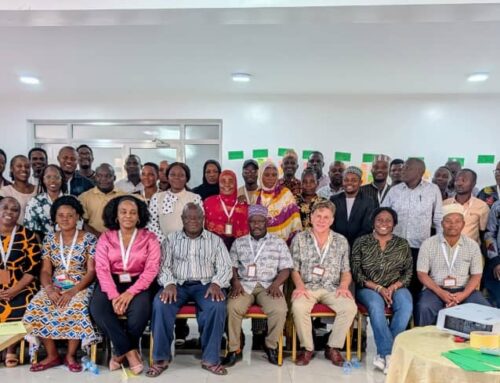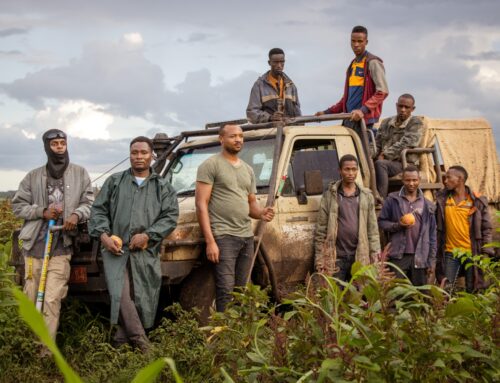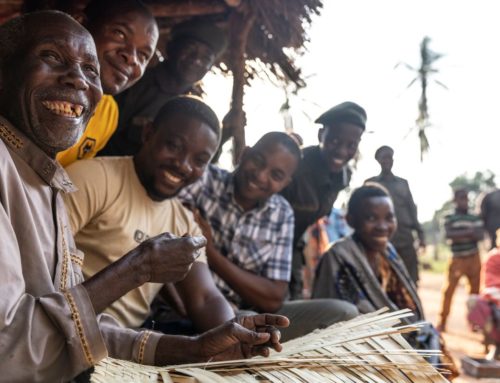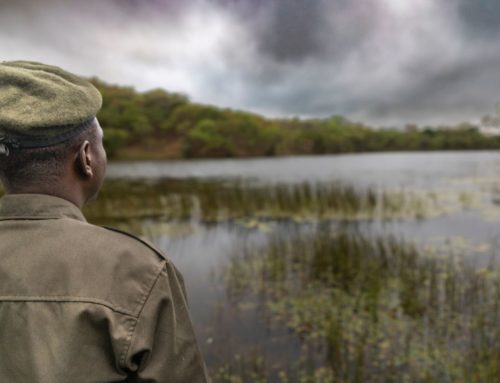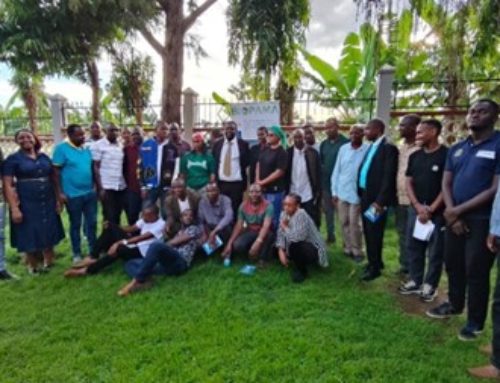Why Financial Transparency Matters in Community-Led Conservation
Introduction
What if conservation wasn’t a guessing game? What if every dollar meant to protect wildlife and support communities was tracked and transparent for all to see? Picture a village bordering a wildlife reserve where people and nature should thrive together. A new conservation project arrives, promising jobs, schools, and a better future. Money flows in—grants, tourism revenue, donor funds. But as time passes, questions arise: Where did the money go? Who decided how it was spent? Without clear answers, promises lose meaning, and doubt spreads fast.
This is the reality in many community-led conservation areas, where financial uncertainty can mean the difference between success and failure. In Tanzania’s Wildlife Management Areas (WMAs), communities are entrusted with protecting nature and managing the resources that sustain it. However, without a clear financial structure, even the best efforts can fall apart. Conservation is not just about protecting wildlife; it’s about building a sustainable future. True sustainability depends on trust- trust in leadership, trust in systems, and trust in numbers.
Now, picture a different reality. Every community member knows exactly how much money comes in and how it’s spent. Rangers receive their salaries on time, schools get their share, and conservation programs operate seamlessly—all because financial systems are transparent. When people see the numbers, they trust the mission. When they trust, they participate. And when they participate, conservation doesn’t just survive—it thrives.
The road to lasting conservation isn’t just about safeguarding landscapes. It’s about building financial resilience, fostering accountability, and giving communities the tools to shape and manage their own success. Because, in the end, conservation isn’t just about protecting wildlife. It’s about creating a future where people and nature thrive together.
New to Community-Led Conservation in Tanzania? Here’s What You Should Know
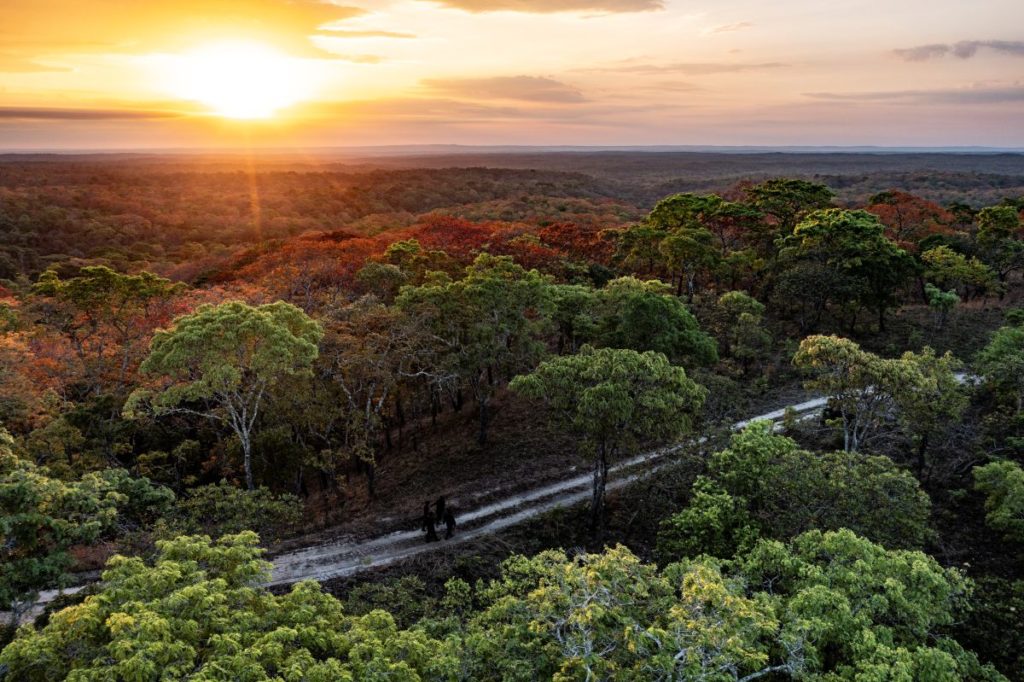
If you’re just stepping into the world of community-led conservation in Tanzania, you might feel like you’ve walked into a class already in session! Whether you’re new to the concept or a seasoned expert looking for a refresher, let’s briefly break down its history, as well as Honeyguide’s role and contributions.
In Tanzania, conservation goes beyond safeguarding wildlife—it focuses on empowering the communities that coexist with them. This principle drives the Community-Based Natural Resource Management (CBNRM) approach, implemented through Wildlife Management Areas (WMAs). These are vast, community-owned conservation landscapes where multiple villages unite, setting aside land to protect wildlife while benefiting from sustainable tourism and conservation-driven enterprises.
The WMA framework was officially introduced in 2003, with the first areas gaining legal recognition in 2006. Honeyguide was founded in 2007 and became a committed partner supporting these conservation areas. Our mission has always been to help WMAs achieve financial independence, social recognition, and ecological resilience. We firmly believe that lasting conservation success depends on community-driven solutions.
Today, 22 WMAs span Tanzania, covering approximately 3.8% of the country’s land—an impressive 3.58 million hectares. Honeyguide directly supports 13 WMAs in Northern and Southern Tanzania, helping them evolve into successful, self-sustaining conservation models. Their impact continues to grow.
The Foundation of Thriving Community-Led Conservation
Beyond One Revenue Stream: Building Financial Resilience
Although a social enterprise can rely on a single income source, it is not recommended for long-term sustainability, as dependence on one revenue stream can create vulnerabilities. The same principle applies to conservation efforts. While tourism plays a key role, it’s seasonal and unpredictable. On the other hand, small-scale projects like beekeeping are unlikely to generate enough profit to significantly impact a Community Conservation Area’s (CCA) budget, especially since a CCA needs over $200,000 annually just to cover basic operations. This ampount doesn’t account for the extra funding needed for community engagement projects.
That’s why Honeyguide works closely with Wildlife Management Areas (WMAs) to diversify their revenue streams, securing long-term financial stability. By combining tourism, carbon credits, and sustainable hunting, communities can build a financial cushion that helps conservation withstand economic fluctuations.
Trust Begins with Good Governance
Effective governance goes beyond leadership—it requires transparency, accountability, and fair distribution of benefits. Without trust, no conservation model can succeed. To support this, Honeyguide developed the Governance Capacity Building Framework, a structured system of training, principles, and modules to strengthen WMA governance. The impact has been clear. In Randilen WMA, one of our sites in northern Tanzania, 92% of the community reported feeling included in decision-making—a strong indication that when governance is effective, trust grows, and conservation thrives.
Effective Management: Making Every Dollar Count
Conservation is costly, but spending wisely makes all the difference. With limited resources, every dollar must go where it’s needed most. Honeyguide’s Management Assessment & Tools (MA&T) framework provides WMAs with structured financial planning, reporting tools, and cost-saving strategies that maximize local resources without compromising conservation efforts. This approach has delivered remarkable results in Makame WMA, where poaching dropped by 94%. At the same time, protection costs remained just $23 per square kilometer—a fraction of what other conservation areas spend on protection.
Turning Conservation into a Self-Sustaining Enterprise
Donor funding plays a role in conservation, but it can’t be the only solution. True sustainability comes when communities can generate their own income from conservation. By structuring Wildlife Management Areas (WMAs) as social enterprises, Honeyguide helps communities establish long-term revenue sources such as carbon, tourism, and hunting. This ensures that conservation doesn’t just survive on external aid but becomes a thriving, self-sustaining force that benefits both people and wildlife.
Breaking down the financial costs of Wildlife Management Areas (WMAs)
As we are talking about numbers, let’s take a closer look at the financial requirements for successful community-led conservation. What does it cost for WMAs to operate effectively? Let’s break down the total budget needed and the specific funding required for key components—such as ranger patrols, governance, and revenue-generating initiatives—providing a clear picture of the financial foundation essential for long-term sustainability.
Contrary to popular belief, Community-Led Conservation Areas do not operate on a shoestring budget. Achieving what’s being done right now would require a magician!
Effectively managing a conservation area demands significant funding, and don’t expect much change in your pocket after investing $200,000 annually just for operating expenses. Add another $200,000 to ensure communities benefit or receive livelihood investments, and the total quickly exceeds $400,000 per year.
A WMA’s operating budget is divided into several key areas:
- Governance: Ensuring transparency and community engagement.
- Management: Overseeing daily operations and strategic planning.
- Protection: The largest cost, covering ranger salaries, patrols, and security.
- Local Livelihood Investments: Supporting community priorities to maintain engagement and goodwill.
- Specialized Costs: Depending on the WMA’s revenue sources (e.g., tourism, carbon credits, hunting), additional investments may be required.
Estimated Annual Cost Breakdown
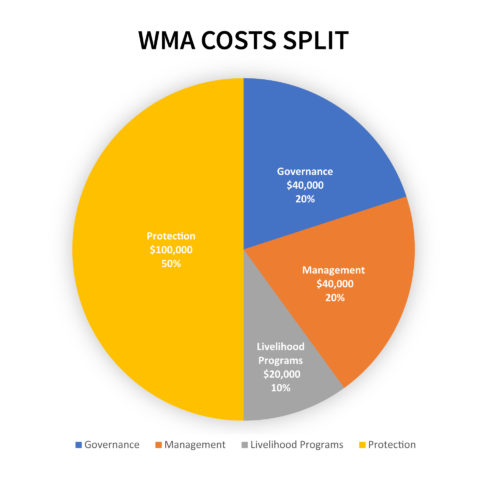
Protection Costs: The Largest Expense
Security is the most significant financial commitment, consuming over 60% of the operating budget in most conservation areas in Africa. Protection costs vary widely depending on the landscape, ranging from $23 to $2,000 per sq km.
Ranger Unit Costs
How do we arrive at this? Let’s break it down. A typical patrol needs 10 rangers, a car and a post. If we are to include all costs such as food rations, salary, training, and uniforms, a ranger costs anything up to $3,800 per year.
Transport Costs
Each WMA needs a minimum of two protection units, depending on the area’s size, with each unit costing $50,000. As a result, protection expenses alone total $100,000 annually.
Management & Governance Costs
Effective management is crucial for any social enterprise. With $30,000 set aside for salaries, covering roles such as a manager, accountant, tourism officer, and community liaison officer, along with $10,000 for transportation, office supplies, and internet, the total management costs amount to $40,000 annually.
Of the $40,000 annual budget, governance is often overlooked despite being essential for communities to set priorities, recognize benefits, and uphold conservation efforts. This budget supports leadership meetings, stakeholder engagement, AGMs, and legal compliance. Given the vast landscapes and dispersed populations, it also covers travel, meeting costs, and legal fees necessary for managing large landscapes.
Local Livelihood Investments
To ensure communities benefit, it’s important to allocate a small fund for projects that enhance local livelihoods. A starting point could be $20,000, with the potential to increase as needed.
Understanding WMA Financials
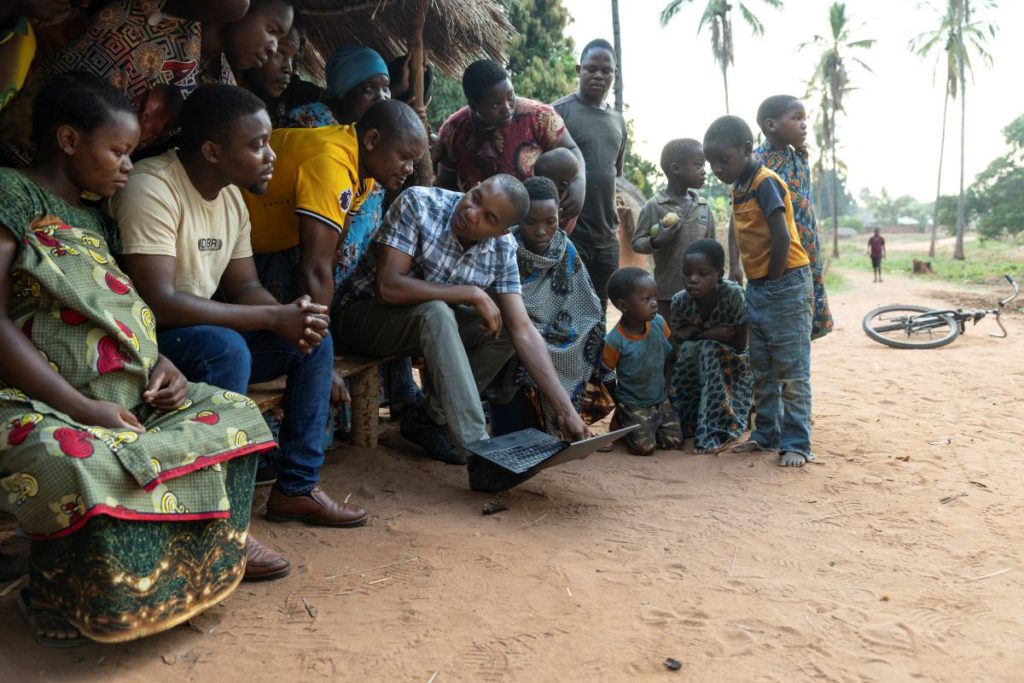
A Wildlife Management Area (WMA) operates like a business; requiring sufficient revenue to sustain itself while managing expenses efficiently. To support this, Honeyguide has created valuable tools that assist communities with financial planning, stakeholder reporting, and building trust in fund management. These resources, available through Honeyguide, play a key role in promoting transparency and long-term sustainability. Some of these tools include:
- WMA Budget – A sample operating budget.
- Rapid Assessment Tool (RAT) – Helps identify financial opportunities.
- WMA Cashflow Tool – Forecasts available funds and identifies financial gaps.
- Business Enterprise Sustainability Tool (BEST) – A comprehensive WMA business plan template.
Stay tuned as we work on improving and making these tools available online for easy access by all the Wildlife Management Areas (WMAs) we support. If you’d like more information about these tools, feel free to contact us at info@honeyguide.org.
Managing Costs Effectively
Successful Community Conservation Areas (CCAs) understand that financial sustainability depends on careful cost management. Every dollar must be spent wisely to ensure conservation efforts remain strong without placing unnecessary strain on resources.
One key strategy is reducing protection costs by finding the right balance between security and community investment. Instead of overspending on enforcement, funds are strategically directed toward initiatives like Human-Wildlife Conflict mitigation and education programs, strengthening community support for conservation.
Another critical factor is preventing governance costs from spiraling out of control. WMAs must be mindful of expenses such as per diems and meeting costs, ensuring that administrative spending does not overshadow conservation priorities.
Long-term financial planning also means accounting for depreciation. Essential assets like vehicles wear out over time, and replacing a Land Cruiser alone requires setting aside approximately $7,000 per year. Without proper budgeting, a sudden breakdown could cripple operations.
Conclusion: Numbers Drive Trust, and Trust Drives Impact
It’s time to change the narrative—community-led conservation isn’t charity; it’s a business. And like any successful business, it requires financial transparency, effective governance, and diverse revenue streams. For WMAs to thrive, local leaders must be financially literate, decision-makers must be held accountable, and revenue models must be built for long-term viability.
At Honeyguide, we understand that trust isn’t given; it’s earned. And one of the most powerful ways to build trust is through numbers. Conservation demands financial discipline, which is the foundation of lasting success. By carefully tracking expenses and making strategic investments, WMAs can achieve both financial sustainability and meaningful conservation impact. Because when the numbers add up, communities win, and conservation succeeds.
Photo credits: Monica Dalmasso

